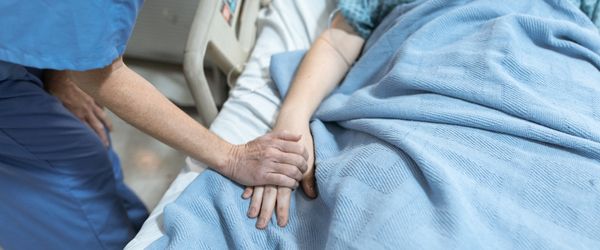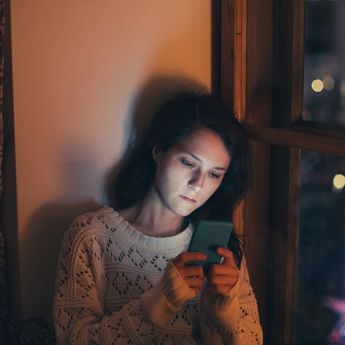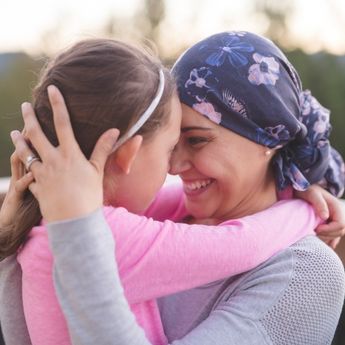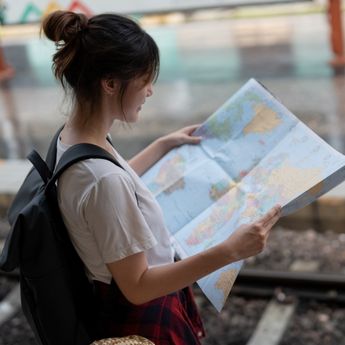By Adriana Ermter
In our monthly column, senior writer and editor Adriana Ermter shares her personal experiences with breast cancer
When I was 15, I ended up in hospital with a ruptured, grapefruit-sized cyst on my left ovary. I was tiny back then—five-foot-four and 98 pounds. The idea that something that big had been growing inside me and that I was clueless about it was bananas. After the surgery, I spent a week recovering, huddled in a bed in the children’s ward, unable to cough or laugh without wincing in pain. Two years later, another cyst, though not as big, required a second surgery.
Years later, in my early 30s, a perforated appendix landed me back on the operating table, septic and in hospital recuperating for a week. So, when I was diagnosed with breast cancer and surgery became part of my treatment plan, it felt old hat.
Having a lumpectomy
My surgery was a lumpectomy, also known as breast-conserving surgery or a partial mastectomy. It required a general anaesthetic to put me to sleep, while the surgeon cut into my right armpit and removed the cancerous lump, along with its “tail,” which extended into my right breast. As part of the procedure, the surgeon also removed a generous portion of the healthy tissue surrounding the tumour and its tail.
Lumpectomies are a common surgical choice for many women with breast cancer and extracting healthy tissue along with the cancerous tumour is a good thing. It helps ensure that all the cancer cells are eliminated. When surgeons say they have “good margins,” it means there are no cancer cells in the surrounding tissue they’ve extracted and tested.
I had good margins, which was great. But it also meant that I was left with a permanent ice-cream-scoop-sized dent in my right armpit and along the side of my breast. That tissue will never grow back.
As part of my lumpectomy, my surgeon also removed several lymph nodes from my armpit area—around a dozen. Lymph nodes are removed and tested to see if the cancer had spread beyond the original tumour. When this happens, it’s called metastasis. There are approximately 20 to 40 lymph nodes in the armpit. They help remove harmful cells and fight infection, but they can also assist cancer cells that break away from the primary tumour to spread throughout the body. Thankfully, my lymph nodes were clear.
Not everyone has as many lymph nodes removed as I did; sometimes it’s just one or two sentinel nodes, depending on the tumour’s location and the situation. Mine were removed during my lumpectomy and can also be extracted during other types of breast cancer surgeries, because mine isn’t the only kind you can have.
Types of breast cancer surgeries
A lumpectomy differs from other breast cancer surgeries as it leaves most of the breast intact. Other surgical options include a total (or simple) mastectomy, where the entire breast is removed; a modified radical mastectomy, which removes the breast and some lymph nodes; a radical mastectomy, which also removes chest wall muscles; and nipple-sparing mastectomies, which preserve the nipple and areola while removing the underlying tissue.
The surgery type depends on the cancer’s stage, size and spread, as well as personal preference and medical advice. Regardless, all surgeries and aftercare can be daunting.
Post-surgery body and mind
After my surgery, I needed time to rest and heal. Because my lumpectomy was scheduled for first thing in the morning and was considered successful, I was able to go home later that evening. My first night at home was easy. I was hopped up on painkillers and woozy from the anesthetic, so after my sister tucked me into bed, I fell asleep quickly.
The second, third, fourth and fifth days were not as easy. My body ached, my right side throbbed and finding a comfortable position to sleep or sit in felt impossible. Simply walking up the short flight of stairs from my living room to my bedroom in my tiny condo exhausted me. I couldn’t dress myself—putting on underwear or pulling up a pair of sweatpants became a two-person task. My sister had travelled from Calgary to stay with me and helped. But we both drew the line at having her wash my hair. I waited a week to shower (I know. I looked gross), when I could carefully wash my hair alone while sitting in the bathtub with the shower water running over my head. It was a slow laboured process, but I needed to freshen up and get ready to go back to work.
I only took one week off work, which was a dumb move. I didn’t have disability coverage and I was worried about paying my mortgage and other bills, so not working didn’t feel like an option. Plus, I feared being treated differently at work. But I should’ve taken two weeks off…or longer. My body was sore, and I was mentally and physically drained. I couldn’t think or concentrate, and my every movement felt like I was swimming in molasses. Coming back to work so early also delayed my healing. I had constant headaches and anxiety; sleep was elusive and the stress I felt while waiting the two weeks for my test results—determining the stage and grade of my cancer and its treatment plan—was excruciating.
If I had to do it all over again, which I wouldn’t wish on anyone including myself, I would take at least two weeks off just to survive.
Thank goodness for organization
Preparing for my surgery though was one of the best things I did. I had pre-made single serving containers of homemade soups and casseroles and put them in the freezer, so that I didn’t have to cook. I had four pairs of cozy pajamas and multiple sweatsuits (with zip-up tops to avoid lifting over my head) to prolong how frequently I needed to do laundry. I had several pillows ready to support my arm and side while sleeping, and an extra-long, soft one to hold against my chest.
The best thing I did though, was accept help. My sister didn’t even ask if I wanted her support. She simply booked a flight and flew out the day before my surgery, staying the week after. She cooked, made me take naps, walked with me slowly up and down the block, kept me company with cheesy movies, fed the cat, mopped my floor and, in her loving bossy way, made sure I rested. She also arranged for my closest friends to check in on me regularly after she went back to Calgary. When she left, I cried.
Everyone’s surgery experience is different but believe me when I say that these small preparations made the first few weeks after surgery so much easier to manage.
Knowledge helps with the unknown
While I wasn’t afraid of having surgery, I was worried about what having breast cancer surgery would mean for me. So, I Googled and WebMD’d a lot. Probably not the best idea, since rabbit holes are everywhere and I went down every single one.
What would have been a better choice? Reading about other women’s experiences on credible breast cancer websites like this one, and on Rethink Breast Cancer or Look Good Feel Better’s sites. Every breast cancer clinic and hospital also offers complimentary pamphlets which, while vague, do provide factual insight. And, of course, speaking with another woman who has gone through or is going through a breast cancer diagnosis too is invaluable—no one else will ever understand you better. These women will comfort you, champion you and help you to feel not quite so alone. They are human-form angels. I know because I have one. She had breast cancer one year before I was diagnosed and shared everything she knew and experienced with me. She is still one of my most trusted confidants. If you don’t have someone like this that you can safely reach out to, DM me on Instagram. I’ll always answer.
Adriana Ermter is a multi award-winning writer and editor. Her work can be read in IN Magazine, 29Secrets.com, RethinkBreastCancer.ca and AmongMen.com. The former Beauty Director for FASHION and Editor-in-Chief for Salon and Childview magazines lives in Toronto with her two very spoiled rescue cats, Murphy and Olive. You can follow Adriana on Instagram @AdrianaErmter







